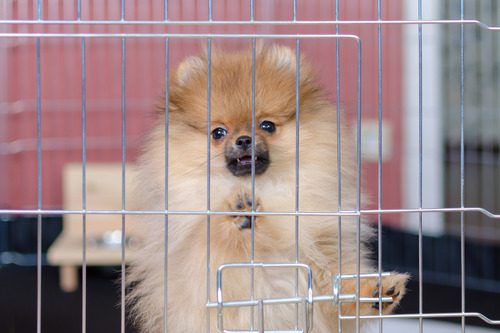Dog & Cat Dental Disease: Signs, Symptoms, and Treatment
Do you have a pet who is showing signs of dental disease? What should you do about it? How do you know whether or not your dog or cat has dental disease in the first place?
In this article, you’ll find a quick rundown of information to help you learn more about the signs and symptoms of dental disease in dogs and cats. You’ll also find information about potential treatments and preventative measures you can take to protect your pet against dental issues, too. Read on to learn more.
Signs and Symptoms of Pet Dental Disease
Signs and symptoms of pet dental disease can include bad breath, inflamed or bleeding gums, loose or missing teeth, difficulty eating, and reluctance to play or chew. It’s important to address these symptoms promptly and seek veterinary care, as untreated dental problems can lead to serious health issues in pets.
Bad breath
Bad breath is typically one of the first signs pet owners notice when their pets have dental issues. Bad breath can be caused by other underlying problems and conditions, too, but dental disease is one of the most common.
Bleeding gums
Bleeding gums tend to occur in pets with gum disease. This symptom typically means the condition has progressed past its first stage and is getting worse, so you should take your pet to the vet to be examined right away if you notice her gums are bleeding.
Swollen gums
Swollen gums may be harder for you to notice than bleeding gums. However, if your pet’s mouth looks visibly swollen from the outside, this usually means her gums are swollen inside her mouth as well. Additionally, it’s a good idea to check your pet’s mouth at least once a month for signs of any issues.
Grouchy behavior
Grouchy behavior, especially in a pet who isn’t normally grouchy, typically indicates a health problem. While this symptom alone doesn’t necessarily mean your pet has dental disease, it can be an indicator when seen along with other symptoms on this list.
Blood in saliva
Blood in your pet’s saliva can help you determine whether or not your pet has dental disease, too. Additionally, some pets with dental disease may develop rope-like saliva when they do not normally have saliva of this consistency. Any changes in your pet’s saliva can indicate an underlying health problem.
Loss of appetite
A loss of appetite, on its own, may not mean your pet has dental problems. However, when seen with other symptoms on this list, it can help you pinpoint dental issues as the underlying cause of your pet’s symptoms. Any loss of appetite that lasts more than a couple of days should be treated by a vet.
Tooth loss
As dental disease progresses, pets may begin to lose their teeth. If your pet’s teeth are falling out (and she’s old enough to be past her teething stages), or if her teeth are becoming easily broken, chipped, or rotten, she needs to be seen by a vet right away.
Visible abscesses
Some pets may develop visible abscesses on their gums or the roof of the mouth. These abscesses are pockets of infection that need to be treated with antibiotics as well as a medical plan from your vet. They can also indicate a severe underlying dental disease issue.
Treatment and Prevention of Pet Dental Disease
Treatment and prevention of pet dental disease is important for the overall health and wellbeing of pets, as untreated dental problems can lead to pain, infection, and even organ damage. Regular dental checkups, daily teeth brushing, and providing dental treats and toys can help prevent dental disease and promote good oral hygiene in pets.
Dental cleaning
Dental cleaning is the first step toward treating dental disease in pets, and it’s also the best way to prevent dental disease in the first place. With a thorough cleaning and scaling procedure once per year, your pet can prevent dental disease and reverse the effects of some types of dental issues, too. You can even brush your pet’s teeth at home to help.

Antibiotics
Infections and damaged gums or teeth will likely need to be treated with antibiotics. It’s possible your vet will also give your pet a round of steroids, depending on the severity and type of the problem. Other treatments may be necessary along with medication.
Removal of damaged teeth
Very severely damaged or rotten teeth should be removed from your pet’s mouth. This procedure is done under anesthesia, so pets with heart conditions may not be good candidates. Otherwise, however, it is typically best to remove problem teeth to prevent dental disease and infection from spreading and worsening.
Follow-ups
Your pet will need to keep up with follow-up appointments to check on her teeth and keep them clean moving forward. Whether you are having her teeth cleaned to treat dental disease or prevent it from ever happening in the first place, frequent vet visits and regular cleanings can go a long way.
Conclusion
As you can see, there are several potential symptoms that can help you narrow down the possibility of dental disease in your pet. However, only a vet can tell you for sure whether or not your pet has dental disease, and if so, what type.
Your vet can also be an excellent resource to help you choose the right treatment, prevention, or management method to protect your pet against worsening dental health issues, too.
Brown Veterinary Hospital in Terre Haute, IN can help with your pet dental needs! Reach out at 812-645-0715 or make an appointment today.
Recent Posts
About Brown Veterinary Hospital
We are here to serve as your partner in keeping your four-legged family member healthy, ensuring you have all the tools you need to provide them with a lifetime of outstanding care. Our animal hospital in Terre Haute offers a full range of services to nurture and extend your pet’s life, from wellness and preventative care to critical care, exotic pet care, and dermatology.





